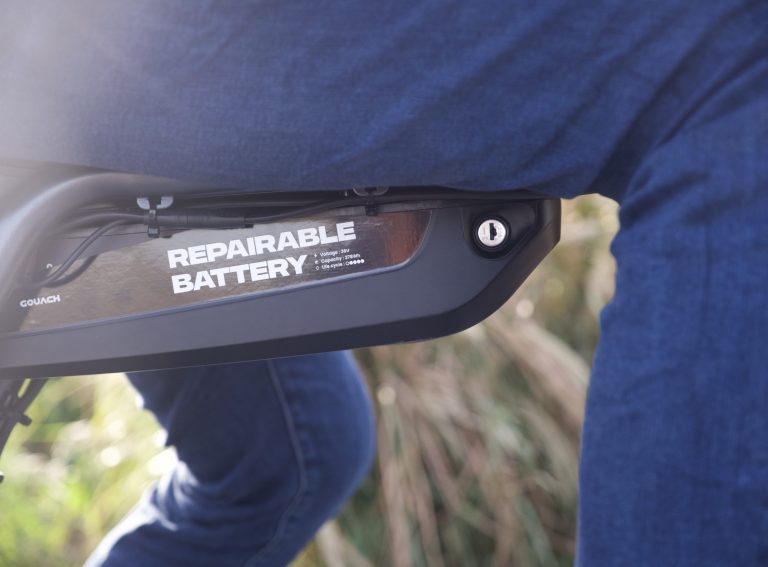On 15 March 2024, Beam Mobility rolled out a brand new 100-vehicle strong fleet of shared dockless e-bikes to the streets of Wellington, and the firm has been blown away by the unprecedented success of the launch ever since.
Branded as the Apollo Lite, the new e-bike is significantly smaller and lighter than the shared e-bikes currently available in Australia and New Zealand, weighing less than 30kg despite possessing a load capacity of 120kg.
The vehicle also has an adjustable seat, a 250w motor, can clock speeds of 25km/h and has a maximum range of 70km on a single charge.
“We worked closely with our hardware supplier Segway-Ninebot to develop the Apollo Lite, and it has already helped attract 50% more e-bike trips and boosted trip lengths by 38% to more than 12 minutes,” Beam’s General Manager for Australia and New Zealand Tom Cooper tells Zag Daily.
“Average trip lengths have increased, as the Apollo Lite is easier and more comfortable to ride for longer distances, while it just appeals to more people of all ages, sizes and experience levels.”
Founded in 2018, Beam Mobility has a presence in eight countries in the APAC region. Cooper is responsible for overseeing the firm’s operations across 38 cities and its 18,000 e-scooters and e-bikes in Australia and New Zealand.
Increasing diversity of micromobility
Alongside the launch, Beam ran a survey collecting data on the perceptions of the Apollo Lite among users in Wellington. The most notable takeaways include that 50% of riders are over the age of 35 and 38% identify as female, while 72% of riders picked either the greater adjustable seat range or the lighter weight of the frame as the best new feature on the new model when compared to previous iterations.
“Riders love the increased seat range and this in particular has led to increased usage among smaller users,” Cooper explains.
“The data showed that 30% of Apollo Lite riders are between 156cm and 165cm, thereby enhancing accessibility for users across a broader range of heights compared to our old e-bike model.”
The more commuter-friendly frame has also contributed to more riders utilising the Apollo Lite for work commutes, with riders over the age of 35 forming half of the Apollo Lite’s ridership.
Beam decided to roll out an initial fleet of 100 e-bikes because along with Segway-Ninebot, it values feedback and always looks to use customers to guide their approach.
“We work closely with our hardware supplier, Segway-Ninebot, to constantly innovate, and there is nothing as impactful as on the ground feedback,” Cooper says.
“Every Apollo Lite in Wellington has been deployed with an invitation for riders to complete a survey, telling us how they’re using the vehicle, where they’re going, and their experience with the new features.
“This feedback allows us to continue to ensure our hardware is tailored for the local community we serve, and we are committed to constantly innovating on the types of micromobility vehicles we offer cities.”
Creating a multi-modal offering
In Australia and New Zealand, e-scooters have outnumbered e-bikes over the past 10 years and have been more popular among users. This has meant the design of e-bikes has lagged behind, according to Cooper.
“In the past five or six years, lots of firms have been iterating the e-scooters but the shared e-bike size has stayed the same in Australia and New Zealand for the past 10 years. This is the first smaller, more accessible device that has been trialed and the signs are really promising.”
Having a fit for purpose e-bike offering is important to Cooper as he believes micromobility providers must give users different vehicle options.
“Certain trips necessitate different transport options, depending on distance, time of day, age, height, and destination” he says.
“People that want a car will still use Uber for example. Providing multiple options is really important and we just want to offer as accessible a service as possible.”
Dockless e-bike ridership has certainly been on the rise around the world, with recent data from Fluctuo revealing that it increased by 54% across Europe during 2023. Meanwhile, a study by McKinsey has found how rapidly bike usage has increased in cities where the infrastructure is in place, with residents in Copenhagen now owning about 750,000 bicycles—five times the amount of cars.
“Over the next couple of months we plan to roll out the Apollo Lite across several other cities in Australia and New Zealand because of how successful it has been in Wellington,” concludes Cooper.





